
 1. Zhàohǎi (Shining Sea) Point: Say Goodbye to Sore Throat and Insomnia
1. Zhàohǎi (Shining Sea) Point: Say Goodbye to Sore Throat and Insomnia


Zhàohǎi Point Explanation: Zhào means to shine; hǎi means sea. This point not only treats sore throat and can be combined with Shèn (Kidney) points, Guānyuán (Gate of Origin), and Sānyīnjiāo (Three Yin Intersection), but also regulates menstrual disorders.
Zhàohǎi was first mentioned in the “Classic of Acupuncture and Moxibustion”. The “Essential Prescriptions Worth a Thousand Gold” refers to it as “Lòuyīn” and it belongs to the Foot Shaoyin Kidney Meridian, being one of the Eight Extraordinary Points, connecting to the Yīnqiāo (Yin Heel) Meridian, with functions of nourishing the Kidney and clearing heat, as well as regulating the Sanjiao (Triple Burner).
Its main effects are: Acupuncture meridian point diagrams suggest it can relieve chest tightness, dry throat, hoarseness, chronic pharyngitis, and has auxiliary effects on shoulder periarthritis and insomnia.
Sun Simiao in the “Essential Prescriptions Worth a Thousand Gold” referred to this point as “Lòuyīn”, indicating that if there is a problem with this point, the Kidney water decreases, leading to Kidney Yin deficiency and causing deficiency heat to rise.
Therefore, whenever we feel discomfort in the chest, dry throat, hoarseness, or even suffer from chronic pharyngitis, we can press this point, which has the effect of nourishing the Kidney and clearing heat, while also allowing the body’s Sanjiao function to flow smoothly, achieving a dual benefit and immediate effect.

 2. Shēnmài (Shen Pulse) Point: Special Treatment for Cold Body
2. Shēnmài (Shen Pulse) Point: Special Treatment for Cold Body

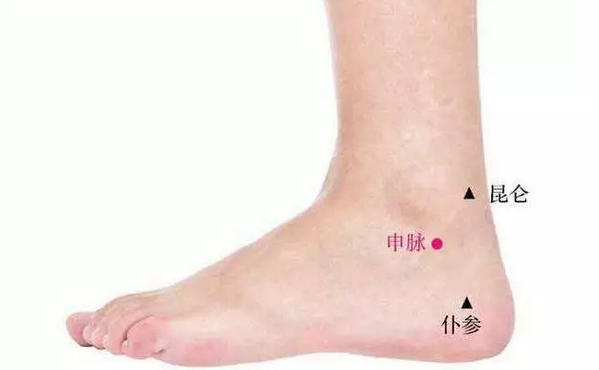
Shēnmài, also known as Yángqiāo (Yang Heel), belongs to the Foot Taiyang Bladder Meridian. It is one of the Eight Extraordinary Points, connecting to the Yángqiāo. Located on the outer side of the foot, just below the outer ankle, it contains the sural nerve and the external ankle artery network, with effects of tonifying Yang, benefiting Qi, and draining dampness.
Main effects are: It can relieve dizziness, redness and swelling of the eyes, lower back pain, and ankle joint pain, and has auxiliary effects on diarrhea and indigestion.
“Lower back pain and leg pain” is a clear sign of cold evil invading the bladder meridian.Since Yángqiāo connects to the bladder meridian, Shēnmài itself is an important point of the bladder meridian.
Thus, the Shēnmài point is the ultimate Yang, using this point can dispel internal cold evil and allow Yang Qi to reach the top, not only balancing the body but also making one walk lightly and agilely.
Some may say, “I can’t needle, even if I know the wonderful use of this point, it’s just talk.”
In fact, the Eight Extraordinary Points in Daoist medicine can be needled or moxibusted. “Shēnmài is an important point of the bladder meridian, and its location is also very simple, in the depression below the outer ankle. When the body is affected by cold evil, it shrinks and shivers, which in TCM is called “contraction and pulling back”, while the Shēnmài point has the meaning of stretching the meridians, which can quickly mobilize the body’s Yang Qi; when Yang Qi is sufficient, the cold evil disperses.
Usually, we can use moxa sticks to warm or stimulate the Shēnmài point with our fingers. When pressing, one should feel a slight soreness and swelling. During moxibustion, it should feel slightly warm; sometimes one can clearly feel a warm current slowly rising from the feet, instantly making one feel much more relaxed.
During the autumn and winter transition, when temperature differences are significant and flu is prevalent, it is recommended to buy some moxa sticks to warm the Shēnmài point, which can prevent flu and enhance immunity, especially for the elderly or those with a cold constitution who should frequently warm this point.

 3. Nèiguān (Inner Pass) Point: Nourishing Beauty and Heart
3. Nèiguān (Inner Pass) Point: Nourishing Beauty and Heart

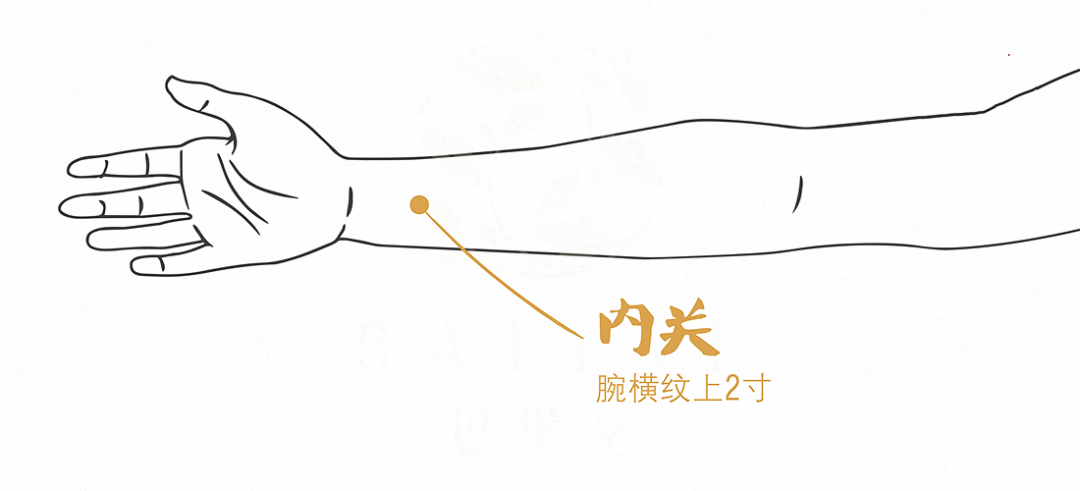
Nèiguān was first mentioned in the “Huangdi Neijing: Ling Shu: Meridian Chapter”, as a Luo point of the Hand Jueyin Pericardium Meridian. It benefits the heart, calms the spirit, harmonizes the stomach, descends counterflow, opens the chest, regulates Qi, and has pain-relieving effects.
Applicable population: Women who wish to delay aging, middle-aged and elderly friends; those who feel depressed, irritable, or tense; patients with coronary heart disease and other acute heart diseases.
Main effects: It can relieve hiccups, heat in the palms, elbow pain, and swelling under the armpits; it treats morning sickness, motion sickness, and diarrhea. It has auxiliary effects on treating heart disease, lung diseases, and breast diseases.
The Nèiguān point is easy to find, located on the inner side of the arm, two inches above the wrist crease. To locate it, make a loose fist and place it palm up, then align the index, middle, and ring fingers with the wrist crease; the point where the index finger touches is the Nèiguān point. The benefit of this point in health maintenance is that it can be pressed and rubbed anytime and anywhere, with a slight feeling of soreness and swelling being ideal.

 4. Wàiguān (Outer Pass) Point: The Point for Hearing
4. Wàiguān (Outer Pass) Point: The Point for Hearing

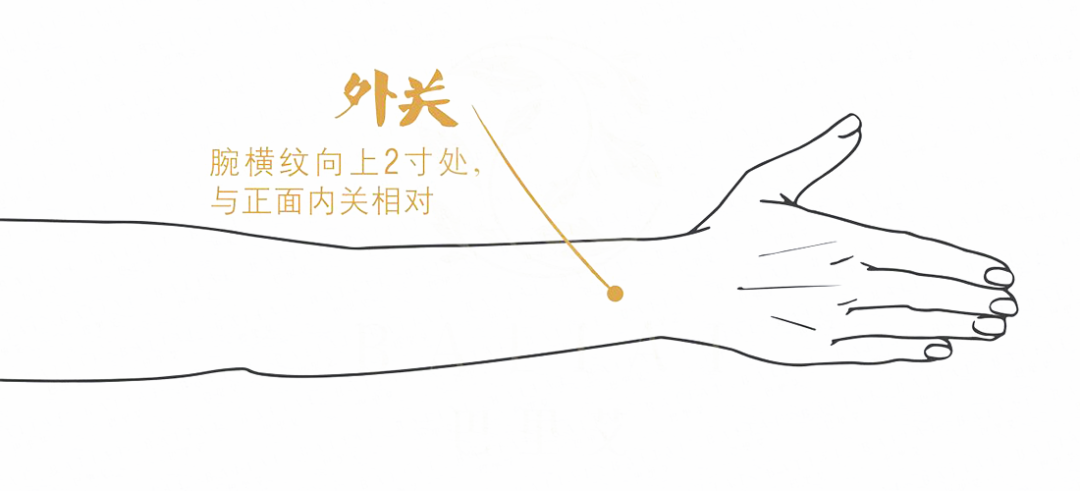
Wàiguān was first mentioned in the “Huangdi Neijing: Ling Shu: Meridian Chapter”, as a Luo point of the Hand Shaoyang Sanjiao Meridian, and one of the Eight Extraordinary Points. It connects to the Yangwei Meridian and has effects of clearing heat, detoxifying, relieving spasms, and activating the meridians.
Applicable population: Those who frequently travel by plane or train for business; patients with acute lumbar sprains, arthritis, and shoulder periarthritis.
Main effects: It can prevent hearing loss, tinnitus, deafness, and relieve lumbar and back pain. Clinically, Wàiguān also has other wonderful uses, such as treating acute lumbar sprains.
Traditional Daoist medicine believes that temporary hearing problems are manifestations of insufficient Yang Qi in the body. So what role does Wàiguān play at this moment?
“Wàiguān” literally means “outer” referring to the outside; “guān” refers to a checkpoint. Wàiguān connects to the Yangwei, and it is the Luo point of the Hand Shaoyang Sanjiao Meridian, where the Hand Shaoyang and Hand Jueyin meridians connect.
Massaging the Wàiguān point can enrich the Yuan Yang Qi of the Sanjiao and guide the Yuan Qi to circulate throughout the body.

 5. Lièquē (Broken Sequence) Point: Special Treatment for Stiff Neck and Migraine
5. Lièquē (Broken Sequence) Point: Special Treatment for Stiff Neck and Migraine

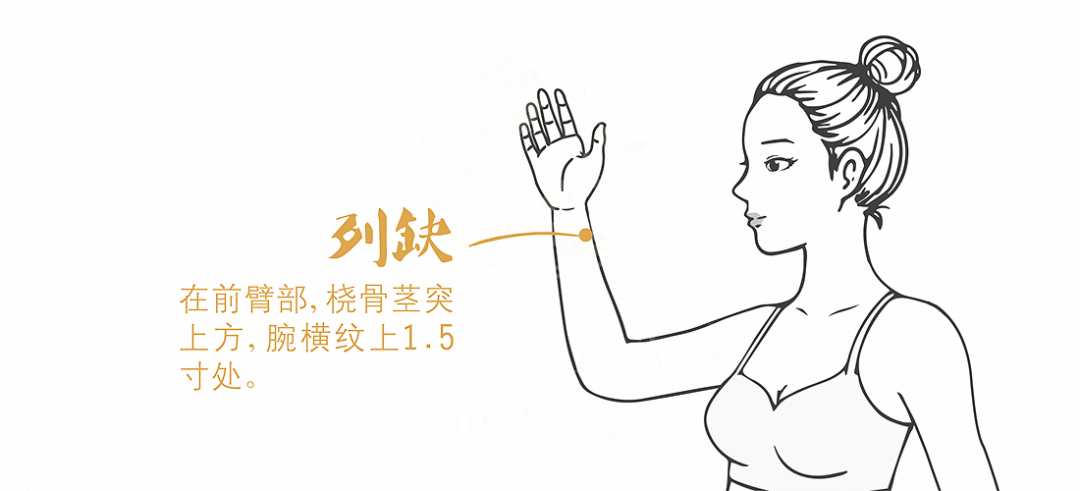
Lièquē was first mentioned in the “Huangdi Neijing: Ling Shu: Meridian Chapter”, as a Luo point of the Hand Taiyin Lung Meridian, and one of the Eight Extraordinary Points, connecting to the Ren Meridian. It has effects of dispersing lung pathogens and regulating the meridians.
Applicable population: Those who frequently experience pain in the head and neck.
Main effects: It can quickly relieve sudden neck pain; it treats stiff neck, migraine, facial paralysis, and has auxiliary effects on cold, asthma, cough, and toothache.
On the human body, the Lièquē point is a tool for repairing head diseases. The “Huangdi Neijing” records that the Lièquē point mainly treats migraines, headaches, and stiff necks.
In the “Great Compendium of Acupuncture”, there is a well-known verse about the four major points, one line states: “For neck and above ailments, seek Lièquē.” This means that ailments above the neck can be treated and adjusted using this point.
Liè means to display or split; quē means gap or void. It is one of the Eight Extraordinary Points, connecting to the Ren Meridian, with effects of dispersing lung pathogens and regulating the meridians, and it is the Luo point of the Hand Taiyin Lung Meridian.
Lièquē is easy to find, located 1.5 inches above the wrist crease on the radial bone. To locate it, make a tiger claw with both hands, and the depression where the index finger touches is the point.
The technique for using the Lièquē point is mainly flicking. The flicking technique involves lateral pushing and rubbing at the point or area, allowing the muscles and tendons to move back and forth, with a feeling of soreness and swelling being ideal. When feeling discomfort in the neck, if one finds stiffness and pain, one can flick the Lièquē point, and the discomfort will quickly lessen.
When massaging the Lièquē point, both hands should lightly grip into a fist, palms facing up, and gently place them on the table, then press, pinch, or rub as needed. During massage, this point will feel sore or painful, with soreness being preferable.

 6. Hòuxī (Back Stream) Point: Governing Neck, Shoulder, and Lumbar Diseases
6. Hòuxī (Back Stream) Point: Governing Neck, Shoulder, and Lumbar Diseases

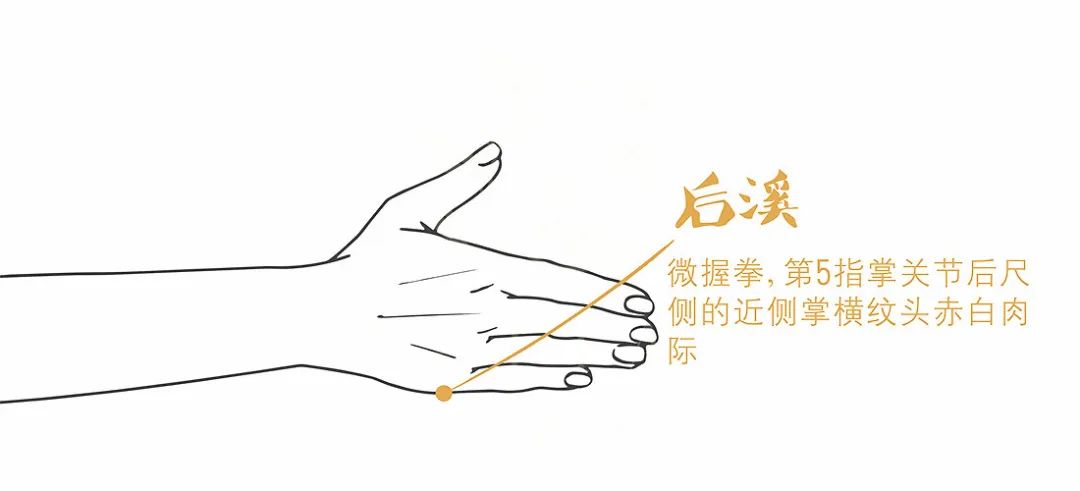
Hòuxī was first mentioned in the “Huangdi Neijing: Ling Shu: Ben Shu Chapter”, as a point of the Hand Taiyang Small Intestine Meridian, and one of the Eight Extraordinary Points, connecting to the Du Meridian and the Small Intestine Meridian. It has effects of relaxing the meridians, benefiting the orifices, and calming the spirit.
Applicable population: Those who frequently face computers; children; office workers; housewives.
Main effects: It can prevent hunchback, neck, lumbar, and leg pain, and also has benefits for protecting vision, relieving fatigue, and replenishing Qi.
Daoist medicine places great importance on the Hòuxī point. It can directly connect to the Du Meridian, being one of the important points among the Eight Extraordinary Points. The Du Meridian governs the Yang Qi of the whole body; when Yang Qi is abundant, the whole body is vigorous.
Acupuncture is a more specialized treatment method; if one is only doing health maintenance, one can simply use pressing and rubbing techniques on the Hòuxī point. Generally, after a few minutes of pressing and rubbing, it can invigorate the Yang Qi of the whole body, making the body feel warm and energized. Pressing this point has excellent therapeutic effects on the Small Intestine Meridian heat and leg pain.
How to find the Hòuxī point? Make a fist, and the point is located at the distal end of the transverse wrist crease behind the fifth finger joint (i.e., the end of the transverse crease behind the fist). If you are sitting in front of a computer, you can place this part of both hands on the edge of the table, using the wrist joint to roll back and forth easily to achieve stimulation.
During the rolling, there will be a slight soreness. This action does not need to be done consciously; just take three to five minutes each day to move it casually. This simple method for treating neck, shoulder, and lumbar diseases, I call rolling and rubbing the Hòuxī point. Persisting in this will indeed have very good effects on the cervical and lumbar vertebrae and is also great for protecting vision.

 7. Gōngsūn (Grandfather Sun) Point: Balancing Dysmenorrhea and Spleen-Stomach Disorders
7. Gōngsūn (Grandfather Sun) Point: Balancing Dysmenorrhea and Spleen-Stomach Disorders

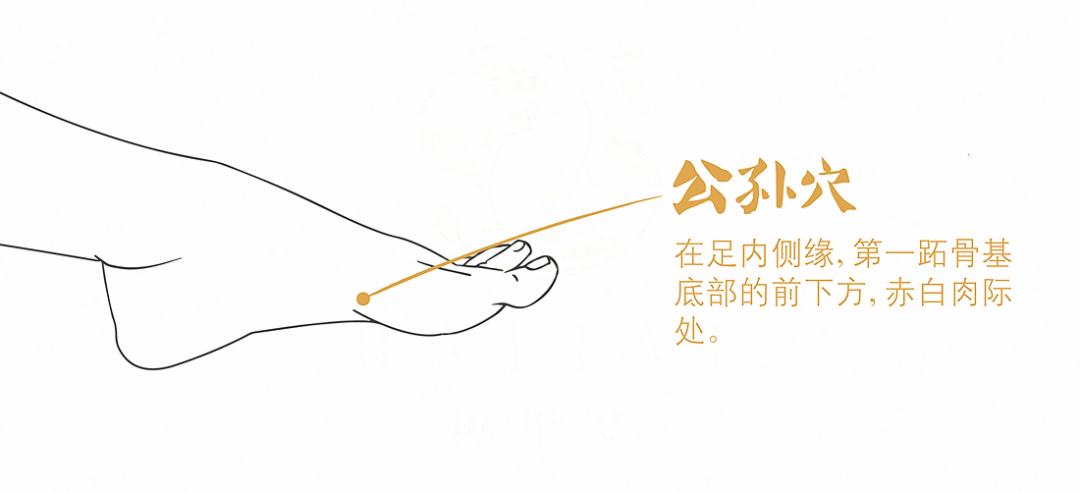
Gōngsūn is the primary warming point for dysmenorrhea and spleen-stomach disorders. Gōngsūn was first mentioned in the “Huangdi Neijing: Ling Shu: Meridian Chapter”, as a Luo point of the Foot Taiyin Spleen Meridian, connecting to the Yangming. It is one of the Eight Extraordinary Points, connecting to the Chong Meridian. It has effects of strengthening the spleen, benefiting the stomach, regulating the Chong Meridian, and eliminating distension.
Applicable population: Women with dysmenorrhea, those with unexplained abdominal pain, heart pain, stomach pain, and chest pain.
Main effects: It can relieve dysmenorrhea symptoms and has auxiliary effects on stomach pain, vomiting, abdominal pain, diarrhea, and dysentery.
We are all descendants of the Yellow Emperor, but few know what his name was. The “Records of the Grand Historian” states that the Yellow Emperor’s surname was Gōngsūn, and his name was Xuanyuan. This point is named after the emperor’s surname, symbolizing the emperor’s central position and rule over the four directions.
The Gōngsūn point is the Luo point of the spleen meridian, connecting to the stomach, and directly communicating with the Chong Meridian located in the chest and abdomen, thus having the effect of treating various spleen and stomach diseases. The Chong Meridian is known as the “sea of the five organs and six bowels”; the “Ling Shu” states that the Chong Meridian is the “sea of the twelve meridians”, the “blood sea” of the human body.
In my past health lectures, I have often discussed the wonderful uses of the Gōngsūn point, focusing on treating many diseases of the chest and abdomen. Revisiting this, I have gradually discovered that this point has other important functions yet to be fully utilized, such as treating dysmenorrhea.
We often describe beautiful girls as “charming and attractive”, but in recent years, based on my clinical experience, I have found that fashionable girls frequently suffer from dysmenorrhea, mainly due to poor dietary and dressing habits. Many fashionable girls prioritize appearance, wearing tight and short clothing, neglecting warmth.
Many girls with dysmenorrhea know that there are currently no good treatments, and they can only rely on painkillers for relief, which not only fails to cure the pain but can also harm the reproductive system. If not well cared for in youth, it may pose significant risks for pregnancy later.
Daoist medicine believes that treating all gynecological diseases should start with the spleen and stomach, especially for menstrual irregularities, the stomach should be adjusted first.
The spleen governs blood and is responsible for transformation. During dysmenorrhea, the blood is dark and accompanied by clots; after two or three days of clot expulsion, the pain symptoms will ease, but it recurs every month. Cold in the lower abdomen or excessive consumption of cold drinks leads to spleen and stomach deficiency, which cannot transform dampness; poor transformation of the spleen and stomach can lead to dysmenorrhea, sometimes accompanied by vomiting, nausea, and headaches.
Why does the Gōngsūn point have such miraculous effects? In TCM, the Gōngsūn point connects to the Chong Meridian, with the Du, Ren, and Chong meridians all originating from the uterus, among which the Chong and Ren meridians are crucially linked to women’s menstruation and reproduction, as the Chong Meridian has the function of containing the Qi and blood of the twelve meridians.
Regulating the Gōngsūn point is equivalent to a comprehensive dredging of the Qi and blood of the twelve meridians in the body, having the effect of promoting circulation and relieving pain. I suggest women with dysmenorrhea can frequently press the Gōngsūn point and drink some “Daughter’s Red” (not wine, as introduced in “Using it Wisely”), which enhances the effect of treating dysmenorrhea.
Location: The Gōngsūn point is located on the inner edge of the foot, just below the base of the first metatarsal. Alternatively, it can be found at the front lower edge of the first metatarsal base, at the red-white flesh junction, one inch behind the Tàibái (Supreme White) point. Or it can be located in the depression at the inner lower edge of the first metatarsal base, at the red-white flesh junction.
When using the Gōngsūn point for body regulation, there is no need to find the exact treatment location; use your own tenderness as a guide.
I generally consider the Gōngsūn point as a region, located behind the big toe, where there is a large metatarsal bone; pressing along this bone on the inner side until you find the point with the most soreness or pain is your own Gōngsūn point.
When using the Gōngsūn point, moxibustion can be applied, using moxa sticks to warm this point for about 15 minutes, which can also warm and supplement the spleen Yang. A tip for moxibustion is called “sparrow pecking moxibustion”. When the skin feels slightly hot, remove it immediately, then continue moxibustion. Repeating this, like a bird pecking, can protect the skin well.
The Gōngsūn point is known as the first warming point for Yang in our feet; with this small point, we can avoid the need for medication and injections at the hospital. As long as we pay more attention to the Gōngsūn point, we can certainly nourish our postnatal foundation.
All of the above is for reference only; please adjust under the guidance of a physician.
Give a thumbs up to support health!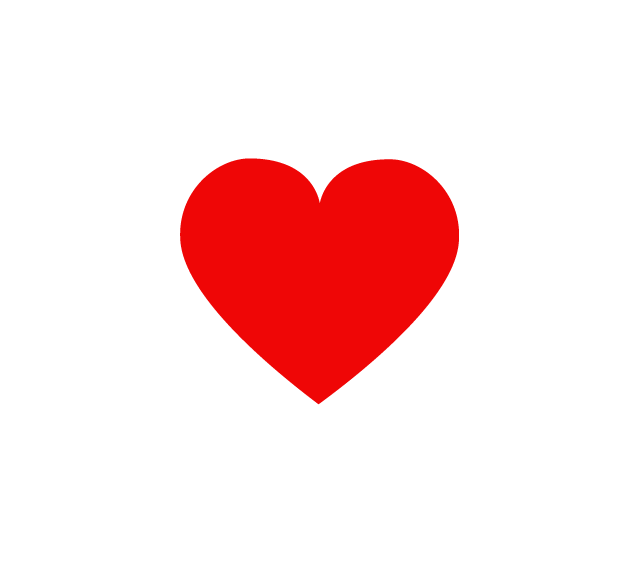 Click below “Business Card” to follow us
Click below “Business Card” to follow us
Light it up so more people can see👇

